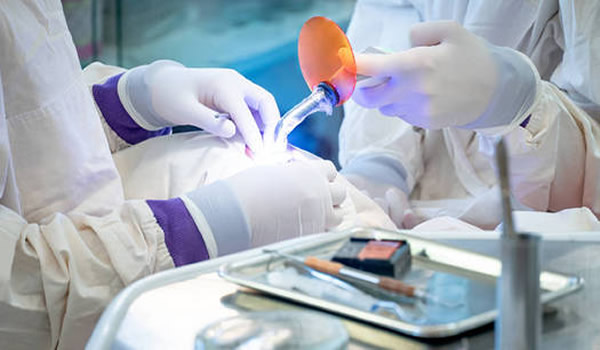Lung cancer is one of the most common and deadliest cancers in Asia. It is strongly associated with smoking, secondhand smoke, and environmental factors such as air pollution. Because symptoms often appear late, many patients are diagnosed at advanced stages. This guide provides a comprehensive look at lung cancer in Asia, covering risk factors, symptoms, treatment options, and prevention strategies.

What is Lung Cancer?
Lung cancer occurs when abnormal cells in the lungs grow uncontrollably, forming tumors that interfere with breathing and may spread (metastasize) to other organs.
The two main types are:
- Non-Small Cell Lung Cancer (NSCLC): The most common type (about 85% of cases).
- Small Cell Lung Cancer (SCLC): More aggressive and strongly linked to smoking.
Lung Cancer in Asia: The Heavy Burden
- High Prevalence: China alone accounts for nearly 40% of the world’s lung cancer cases.
- Leading Cause of Cancer Death: Lung cancer kills more people than breast, prostate, and colon cancers combined.
- Younger Patients Emerging: Some Asian countries report rising cases among non-smokers, especially women.
- Air Pollution Factor: Asia’s high levels of PM2.5 and industrial pollution increase lung cancer risk.
Risk Factors for Lung Cancer
1. Tobacco Use
- Smoking: The leading cause of lung cancer worldwide.
- Secondhand Smoke: Widespread in Asia due to high smoking rates among men.
2. Environmental and Occupational Exposure
- Air Pollution: High smog levels in major cities (Beijing, Delhi, Bangkok).
- Radon Gas: Naturally occurring in some regions.
- Occupational Hazards: Asbestos, arsenic, diesel exhaust.
3. Genetic Susceptibility
- Asians, particularly East Asians, may have unique genetic mutations that influence lung cancer risk and treatment response.
4. Lifestyle and Health Conditions
- Poor diet, lack of physical activity, and chronic lung diseases such as COPD raise risks.
Symptoms of Lung Cancer
Early stages often have no symptoms. Advanced disease may cause:
- Persistent cough or change in a chronic cough.
- Coughing up blood.
- Shortness of breath and wheezing.
- Chest pain.
- Weight loss and loss of appetite.
- Fatigue.
⚠️ Many patients in Asia delay medical care, mistaking symptoms for infections or smoking effects.

Diagnosis of Lung Cancer
- Imaging Tests: X-ray, CT scan, PET scan.
- Sputum Cytology: Examining mucus for cancer cells.
- Biopsy: Tissue sample for confirmation.
- Genetic Testing: Identifies mutations (EGFR, ALK, KRAS) important for targeted therapy.
Treatment of Lung Cancer
1. Surgery
- Effective in early-stage cancer if tumors can be removed.
2. Radiation Therapy
- Used when surgery is not possible or alongside chemotherapy.
3. Chemotherapy
- Kills cancer cells but may cause side effects such as fatigue and nausea.
4. Targeted Therapy
- Drugs aimed at genetic mutations common in Asians (e.g., EGFR inhibitors).
- Offers more personalized treatment with fewer side effects.
5. Immunotherapy
- Helps the body’s immune system fight cancer.
- Emerging as a promising treatment in advanced cases.
Prevention of Lung Cancer
Reduce Tobacco Exposure
- Quit smoking immediately.
- Ban smoking in public areas to reduce secondhand smoke.
- Offer support programs for cessation (nicotine replacement, counseling).
Environmental and Lifestyle Measures
- Reduce exposure to air pollution where possible.
- Use masks in high-smog cities.
- Improve diet with antioxidants (green tea, fresh vegetables, omega-3 fish).
- Exercise regularly for lung health.
Screening and Early Detection
- Low-Dose CT Scans: Recommended for high-risk individuals (smokers over 50, people with family history).
- Annual Health Check-ups: Critical for early detection.
Special Considerations in Asia
- China & India: Heavy tobacco use combined with pollution creates a “double risk.”
- Southeast Asia: Widespread secondhand smoke exposure due to indoor smoking culture.
- East Asia (Japan, Korea, Taiwan): Non-smoker lung cancer, especially among women, is relatively high.
- Rural Areas: Lack of screening programs leads to late diagnoses.
Action Checklist for Lung Health
- Quit smoking and avoid secondhand smoke.
- Get screened if you are in a high-risk group.
- Eat a diet rich in vegetables, fruits, and omega-3 fatty acids.
- Protect yourself from occupational hazards.
- Stay informed about air quality and limit outdoor exposure during smog days.
- Maintain regular exercise for overall lung capacity.
- Consult a doctor if you have a persistent cough or unexplained weight loss.

Conclusion
Lung cancer is one of Asia’s most pressing health crises. While tobacco use remains the leading cause, pollution and genetics also play significant roles. Early detection and modern treatment options improve survival, but prevention through lifestyle changes and public health policies remains the best strategy.
By combining smoking cessation, improved environmental policies, and widespread screening, Asia can significantly reduce the lung cancer burden in the coming decades.
lung cancer symptoms, smoking and lung cancer Asia, lung cancer treatment guide